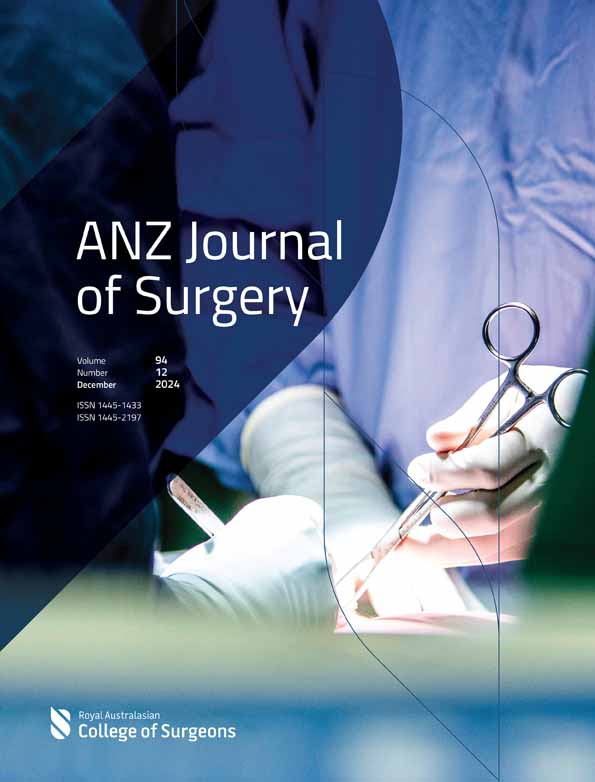Long-term outcomes in advanced anterior skull base malignancy: a single quaternary institution experience
B. J. Panizza is an Editorial Board member of ANZ Journal of Surgery and a co-author of this article. To minimize bias, they were excluded from all editorial decision-making related to the acceptance of this article for publication.
Abstract
Background
Advanced skull base malignancies are a heterogenous subset of head and neck cancers, and management is often complex. In recent times, there has been a paradigm shift in surgical technique and the advent of novel systemic options. Our goal was to analyse the long-term outcomes of a single quaternary head and neck and skull base service.
Methods
A retrospective review of 127 patients with advanced anterior skull base malignancies that were treated at our institution between 1999 and 2015 was performed. Multiple variables were investigated to assess their significance on 5 and 10-year outcomes.
Results
The mean age was 60.9 (± 12.6 SD). Sixty-four percent were males and 36% were females. Ninety percent of patients had T4 disease. Median survival time was 133 months. The 5-year overall survival (OS) was 66.2%, disease-specific survival (DSS) was 74.7%, and recurrence-free survival (RFS) was 65.0%. The 10-year OS was 55.1%, DSS was 72.1%, and RFS was 53.4%. Histological type and margin status significantly affected OS & DSS.
Conclusion
Surgical management of advanced skull base tumours has evolved over the last few decades at our institution with acceptable survival outcomes and complication rates. Histological diagnosis and margin status are the main predictors of survival. The addition of neoadjuvant systemic agents in current trials may improve outcomes.
Conflict of interest
None declared.




